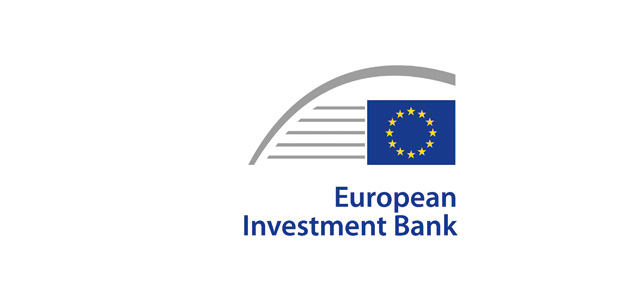
Encouraging gradual and pragmatic alignment with the EU Taxonomy is a major step for accelerating the uptake of the EU Green Bond Standard and making it work, say Marco Zimmermann and Aldo Romani at the European Investment Bank.
Environmental Finance: Why is the EU Green Bond Standard (GBS) important for the green bond market?
 Marco Zimmermann: The GBS is a strong and voluntary standard established by EU law that is due to apply from the end of 2024. It allows green bond issuers to demonstrate that their use of proceeds is aligned or aligning with the EU Taxonomy of sustainable economic activities. Combined, the Taxonomy and the GBS promote a uniform and reliable classification of these activities within the internal market for the provision of standardised information that can be compared by sustainable investors. This is a core condition for fair competition, efficient pricing of investment alternatives, and effective investment within the Capital Markets Union (CMU) the EU is developing. With the CMU, the EU aims to facilitate cross-border investment for sustainable development, an endeavour that naturally extends to EU investments in extra-European markets.
Marco Zimmermann: The GBS is a strong and voluntary standard established by EU law that is due to apply from the end of 2024. It allows green bond issuers to demonstrate that their use of proceeds is aligned or aligning with the EU Taxonomy of sustainable economic activities. Combined, the Taxonomy and the GBS promote a uniform and reliable classification of these activities within the internal market for the provision of standardised information that can be compared by sustainable investors. This is a core condition for fair competition, efficient pricing of investment alternatives, and effective investment within the Capital Markets Union (CMU) the EU is developing. With the CMU, the EU aims to facilitate cross-border investment for sustainable development, an endeavour that naturally extends to EU investments in extra-European markets.
This set of shared definitions was the first priority of the EU Action Plan on Financing Sustainable Growth and is instrumental to the delivery of the EU Single Access Point, which should concentrate information for investors under the umbrella of the EU CMU 2020 Action Plan. Association with these meaningful EU initiatives, which are increasingly being used to inform policy and investment activities outside the EU, has the potential to foster the policy value, recognition, performance, attractiveness, and size of the green bond market.
EF: What are the challenges associated with the application of the EU Taxonomy and the EU GBS?
MZ: At times, the nature of issuers’ operations can limit their ability to collect the required data; examples include lending via budget programmes or loans for general purposes, on-lending via bank intermediaries, and lending outside the EU. These limits are exacerbated by the fact that reporting requirements do not yet apply uniformly across the EU economy, and by ongoing differences between EU and national criteria. Finally, EU legislation is still evolving: there is a lack of officially validated market practices and standard assurance procedures.
In addition, there is a concern that any efforts that are less than perfect may lead to accusations of greenwashing. This concern grows when the collection of data extends beyond the activities specifically selected for green bond allocation to all the issuer’s activities. Here, the potential administrative burden adds to the list of concerns, especially when it comes to retroactively applying new criteria, based on proxies, to historic investments that may not be grandfathered.
EF: What can be done to obviate these challenges and accelerate the uptake of the EU GBS?
 Aldo Romani: A prudent stance by market practitioners is unsurprising during the transition to a new regulatory regime. The fear of being criticised due to uncertainty in the availability or quality of data, however, may make potential users freeze rather than act and improve. The inability of issuers to immediately provide the complete suite of information necessary to unambiguously demonstrate full Taxonomy alignment risks deterring them from actively supporting the transition.
Aldo Romani: A prudent stance by market practitioners is unsurprising during the transition to a new regulatory regime. The fear of being criticised due to uncertainty in the availability or quality of data, however, may make potential users freeze rather than act and improve. The inability of issuers to immediately provide the complete suite of information necessary to unambiguously demonstrate full Taxonomy alignment risks deterring them from actively supporting the transition.
A positive perspective is needed to dissipate this risk, with emphasis on the instrumental value of the Taxonomy for a market-driven transition rather than an exclusive focus on legal compliance with regulatory requirements. Investors should be guided to see value in monitoring and supporting the transformation of the economy as a whole, and not only in rewarding activities that are already contributing substantially to the relevant policy objectives. Issuers should be helped to look at the EU GBS as a business opportunity and a source of competitive edge in their dialogue with investors, rather than as a matter of pure operational and legal risk.
For this purpose, it is necessary to clarify that:
- the Taxonomy can apply separately to classification/reporting and investment selection. The former does not constrain the latter and rather aims to establish a reference for more accurate pricing of the whole spectrum of investment alternatives; and
- gradual, and not only holistic, Taxonomy alignment makes sense, as step-by-step implementation can facilitate moving in the right direction and permits stakeholders (managers as well as investors) to monitor progress on the way, which in turn incentivises disclosure of any improvement as soon as it materialises.
These two clarifications can help establish a proactive and conducive approach to the mapping of the status quo and the definition and implementation of improvement targets that the market can monitor and reward. Within this framework, a strategy of gradual alignment with the EU Taxonomy and the EU GBS can become an instrument of the continued amelioration of sustainability in all the activities of the issuer below substantial contribution thresholds – including activities that do no significant harm to the environmental objective in scope or that can be moved to this category via appropriate investments.
EF: What is the stance of the European Commission (EC) and the EU Platform on Sustainable Finance (PSF) with respect to the approach you describe?
AR: The approach does not question the enforcing nature of the law. It only suggests, to paraphrase Tommaso Padoa-Schioppa, that a “gentle force” is more effective on the ground. ‘Gradual alignment’ facilitates timely disclosure of already available data and facilitates the definition of plans for the collection of yet unavailable information to allow for ‘full alignment’ in due course. Regulatory and supervisory authorities may, in fact, have a vested interest in seeing gradual alignment strategies applied in the market on a voluntary basis, while legitimately reiterating that no full alignment can be claimed until all conditions are met. Recent publications by the EC and PSF provide relevant indications in this respect.
In December 2023, upon entry into force of the EU GBS Regulation, the Commission published a Draft Commission Notice on the interpretation and implementation of certain legal provisions of the Disclosures Delegated Act under Article 8 of the EU Taxonomy Regulation on the reporting of Taxonomy-eligible and Taxonomy-aligned economic activities and assets, stating that: “in the absence of sufficient data and adequate evidence, financial undertakings are encouraged to disclose on a voluntary basis and separately from their KPIs:
- any estimates of Taxonomy alignment of their exposures that are currently excluded from their KPIs (e.g. exposures to non-listed SMEs);
- any estimates of Taxonomy-alignment of their exposures covered by the KPIs, but where financial undertakings lack sufficient data and adequate evidence specific to their exposures to prove Taxonomy-alignment, or
- any information in relation to a partial alignment of their exposures with the EU Taxonomy (i.e. where only certain Taxonomy criteria are met or are proved to be met).
While the KPIs of financial undertakings are intended to represent faithfully the extent to which a financial undertaking finances Taxonomy-aligned economic activities, they do not impose any limitations on the financing of any specific sector, including strategic sectors, or of any specific economic operators, including SMEs.”
At the end of January, the PSF published its Compendium of Market Practices report that, among other things, echoed the Commission with the peer-to-peer recommendations it extends to public sector issuers of green bonds, based on a detailed market analysis reported on pages 175-222 of its Annex: Market practices from Platform stakeholder groups. This analysis, which relies on validated public information as well as outreach to public sector issuers, presents both a general synthesis of the feedback received as well as eight case studies. The respondents cover over 90% of the green bonds issued by EU-based public sector issuers and over 40% of the green bonds issued by all EU-based issuers. It is, therefore, significant.
The core conclusions are summarised on pages 176-179 of the Annex and were commented on by lead experts in a webinar broadcast by the Commission and the PSF on 6 February. The prevalent Taxonomy alignment observed at this stage is a combination of substantial contribution assessment of the use of proceeds with a gradual approach to the Do No Significant Harm (DNSH) and minimum safeguards (MS) criteria, whose implementation is generally deemed to require more time.
On this basis, the report identifies as one of the PSF’s priorities for its work in 2024 the provision of “guidance on the gradual application of the Taxonomy to green bonds” to “advise the EC on how to encourage the uptake of the EU GBS by green bond issuers that are not in scope of the Corporate Sustainability Reporting Directive (e.g. public sector and non-EU issuers)” (Priority 7 on page 13). The platform has appointed the European Investment Bank (EIB) and the European Sustainability Mechanism to lead this workstream, which aims at a pragmatic collaboration with the respondents to the outreach last year as well as at further fruitful dialogue with other relevant stakeholders within and outside the EU.
The report also includes as priorities that the PSF shall advise the Commission on:
- “how to improve the usability of the DNSH technical screening criteria with a view to contributing to the future revision of the Climate Delegated Act” (Priority 1.a. on page 10); and
- “the usability of the green asset ratio (GAR) as part of the review of the Disclosures Delegated Act” (Priority 2.a. on page 11).
This thereby highlights, in line with article 26 of the Taxonomy Regulation, that the operationalisation of the Taxonomy is indeed a process that takes into account the actual experience collected by market practitioners via their feedback to the PSF.
EF: What is the EIB’s own experience in terms of gradual alignment with the EU GBS?
AR: We share and fully support the conclusions of the report, which illustrate a direction of travel that is bound to be beneficial for the green bond market.
The EIB inaugurated this market in 2007 and remains the largest multilateral development bank-issuer of use-of-proceeds green and sustainability bonds to date, with total issuance of €84 billion ($90 billion) in 23 currencies. From the very inception, the key objective of EIB’s issuance in this format has been “accountability of future eligible disbursements and precise definition of the projects to be included in this category”.The Taxonomy meaningfully serves this purpose and the EIB tuned the documentation of its Climate and Sustainability Awareness Bonds (CABs and SABs) to the evolving EU legislation on sustainable finance back in September 2018, just after the Commission’s Taxonomy Regulation Proposal of May 2018.
The objective of gradual alignment with the EU GBS was formalised in the EIB’s Climate Bank Roadmap of November 2020 and reiterated during its recent mid-term review.
Since 2020, the EIB has revised its CAB eligibility criteria to gradually align CAB allocations with the technical screening criteria for substantial contribution to climate change mitigation of the Climate Delegated Act. For all Taxonomy-eligible activities, this objective is deemed to have been achieved over the course of 2022 and is expected to be confirmed with Reasonable Assurance (ISAE 3000) in the 2022 CAB Framework.
As regards DNSH and MS, the EIB has so far proceeded by proxy, comparing our Environmental and Social Policy and Standards with the relevant provisions of the EU Taxonomy Regulation, thus securing alignment with the logic of the Taxonomy. These steps now permit a more project-focused analysis of DNSH and MS in continued engagement with clients, the PSF and the auditors to establish facts for further alignment. This experience builds expertise that can also be put to work in the field of technical assistance within and outside the EU.
MZ: This timely and coherent course of action is in line with the Report on CAB Evaluation approved by the EIB’s Board in March 2021, which recommended that “the EIB should continue to lead the way in demonstrating the application of the EU GBS and the EU Taxonomy and championing EU standards globally”. It is a clear mandate that the EIB, as the EU’s climate bank, is pursuing pragmatically along the whole spectrum of its capital market, lending and advisory activities, with ongoing feedback into the PSF.
Marco Zimmermann is global head of treasury and capital markets, and Aldo Romani is head of sustainable finance, finance directorate, and a Member of the PSF at the European Investment Bank in Luxembourg.
For more information, see: eib-cab-framework-2022.pdf.






